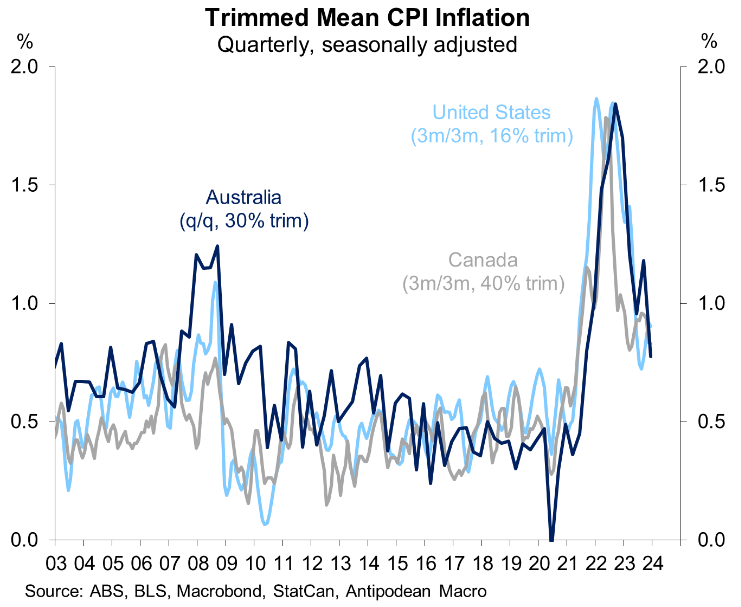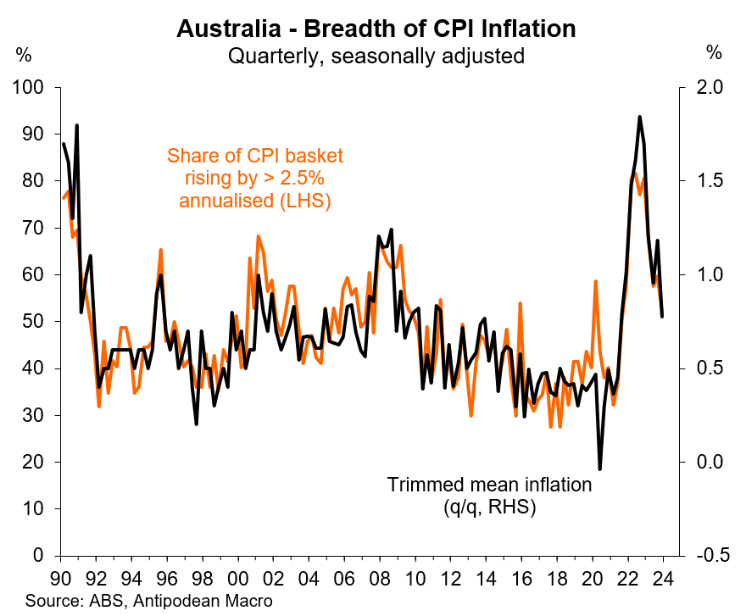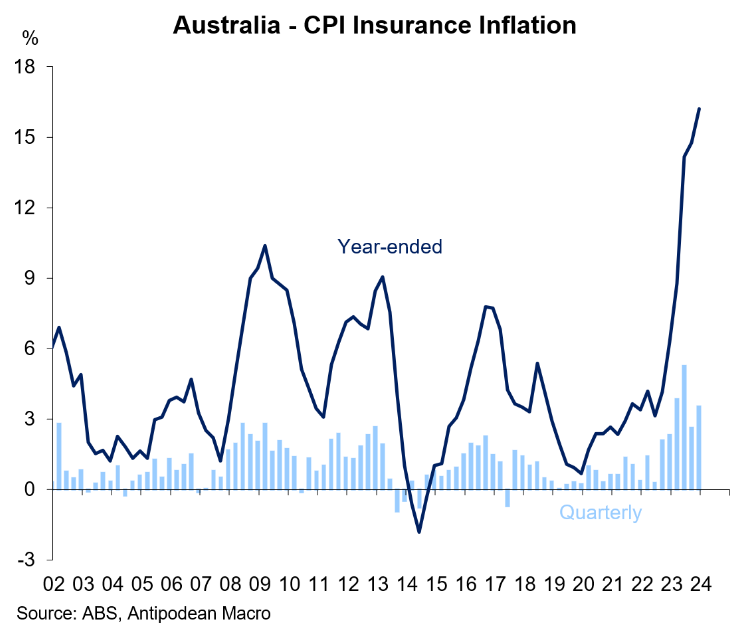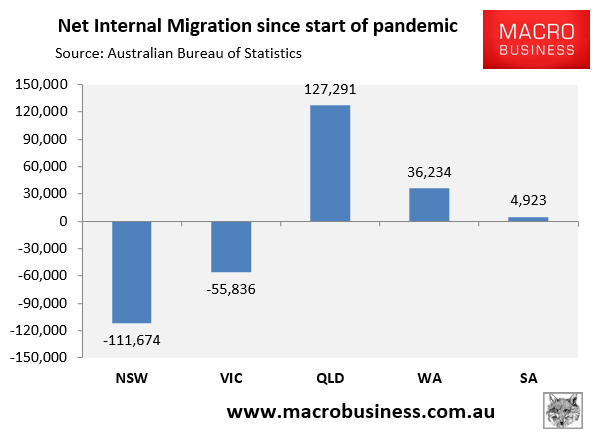Wednesday’s quarterly CPI inflation print was unambiguously good news, with both headline and core inflation falling fast than expected to 4.1% and 4.2% year-over-year respectively.
The below chart from Justin Fabo at Antipodean Macro summarises the situation:

The result has Australia’s underlying inflation falling in lockstep with Canada and the United States:

Measures of the ‘breadth’ of inflation in Australia also declined noticeably in Q4, according to Fabo, suggesting the inflation falls are broad-based:

One major sticking point, however, is the hyper-inflation in insurance premiums, which rose a whopping 16.2% in 2023, the highest rate of growth in decades:

The ABS noted that “higher reinsurance, natural disaster and claims costs contributed to higher premiums for house, home contents and motor vehicle insurance”.
The latest extreme weather events in Queensland should keep upward pressure on insurance premiums, which could drive more families to cancel their coverage.
Many insurance companies are now requiring flood insurance to cover damage from both stormwater and river flooding, resulting in premiums of up to $15,000 per year for some homes.
Allianz is one of the few companies that provides a choice, and data provided to a federal parliamentary inquiry shows that nearly 74% of households with the highest flood rating risk do not purchase flood insurance, with many households in such areas citing a lack of affordable coverage as a problem.
“For some highly exposed communities, such as in the northern NSW region impacted by [2022 flooding], around 90% of customers do not purchase flood cover”, Allianz said.
Building insurance costs are also surging, which is exacerbating the construction industry’s problems and threatening to limit the supply of new homes.
The Herald-Sun reported last year that “Victorians will be slugged with a 43% increase to Domestic Building Insurance as the home building industry continues to feel the strain of surging cost and company collapses”.
Nearly 130,000 Australians have relocated to Queensland since the start of the pandemic:

Many Sydneysiders and Melburnians would have purchased houses in Queensland sight unseen.
I wonder how many people affected by floods are regretting their decision? Rising insurance premiums will only make matters worse.
With extreme weather events becoming more common as a result of climate change, it is more necessary than ever to exercise caution when purchasing property in a flood or bushfire-prone location.

